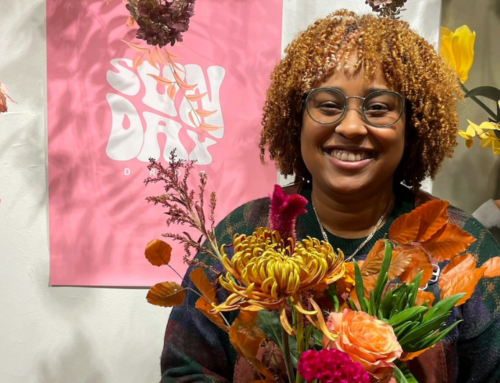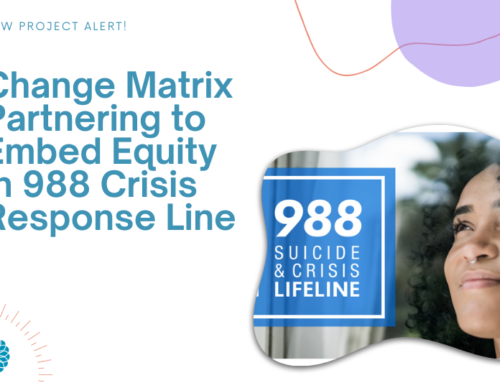March 22-29, 2019 was been a big week for Change Matrix (CM). Elizabeth and Suganya started the week in Nashville at NatCon19, the largest US convening of professionals who focus on mental health. Elizabeth was working with the CONNECTED project as a partner and our role is to coach 5 pilot sites who have received funding to develop innovative initiatives that will decrease depression, anxiety and suicide among adolescents in their community. Each pilot site has committed to meaningfully engage youth as partners in the change process leading to successful implementation of their initiative. We kicked off the program by bringing pilot teams and youth influencers together for two days. During the time the youth were connecting with one another and learning about their role, the teams met with Elizabeth to learn about and explore change, leadership and how they could effectively partner with youth to lead change. Lightbulbs went off around inviting allies, partners and those with different experiences up to the balcony to consider context for the process of change.
During this same period, Suganya was involved with a joint venture by Kaiser Permanente and the National Council for Behavioral Health to prepare primary care systems to better address the impacts of trauma by launching “Trauma-Informed Primary Care: Fostering Resilience and Recovery” a three-year project focused on developing, testing, and disseminating a scalable, field-informed change package. As part of an 11 member national Practice Transformation Team Suganya was involved in developing the change package that will provide resources, tips, and tools to guide primary care organizations in the planning, implementation, and evaluation of a trauma-informed approach.

Suganya and Elizabeth then partnered on a presentation for conference attendees on the intersection of culture and trauma and what adaptive leadership need to know, along with a colleague from the National Council. After a brief introduction on why trauma must be seen through a cultural lens and culture must consider the experience of trauma, both personally and historically, we suggested that a comprehensive approach must be applied at the individual, organizational and community levels. There was a strong emphasis on the unique personal experience of trauma as well as the community story that takes place over years to really understand the collective trauma and strengths that provide the context for the personal experience.
Later in the week, Suganya stayed on at the conference and participated in a convening of about 20 funders interested in knowing more about the status of adolescent mental health and the gaps in services and supports. Suganya participated in a panel to provide information to the funders related to adolescent mental health needs. Suganya’s intent was to engage philanthropic institutions in exploring innovative approaches that otherwise would not advance the field. Her hope was that through these initial conversations philanthropy would engage more in community partnerships with the intent to reduce health disparities for adolescents. That these future potential endeavors would support culturally congruent practices that aid in building resiliency and provide prevention/ intervention and recovery efforts for under and unserved adolescent populations.
 Later in that week, Rachele and Elizabeth attended the Culturally Responsive Evaluation and Assessment (CREA) conference to promote our work in Expanding the Bench™. Expanding the Bench is an initiative to support increased numbers and access to evaluators from underrepresented minority groups who practice culturally responsive and equitable evaluation. The theme of the conference this year was intersectionality in evaluation. In the plenaries and sessions we attended, we explored elements of the history of research and evaluation that did not acknowledge and were not responsive to cultural context, the impact of data that does not consider the strengths and resilience of historically oppressed communities, and the complexity of exploring social and psychological conditions when we must consider the multiple dimensions that collectively make up one’s identity. Recommendations in light of that complexity focused on engaging people with lived experience and members of the groups that are a part of the evaluation be included in the evaluation design, implementation, analysis and dissemination.
Later in that week, Rachele and Elizabeth attended the Culturally Responsive Evaluation and Assessment (CREA) conference to promote our work in Expanding the Bench™. Expanding the Bench is an initiative to support increased numbers and access to evaluators from underrepresented minority groups who practice culturally responsive and equitable evaluation. The theme of the conference this year was intersectionality in evaluation. In the plenaries and sessions we attended, we explored elements of the history of research and evaluation that did not acknowledge and were not responsive to cultural context, the impact of data that does not consider the strengths and resilience of historically oppressed communities, and the complexity of exploring social and psychological conditions when we must consider the multiple dimensions that collectively make up one’s identity. Recommendations in light of that complexity focused on engaging people with lived experience and members of the groups that are a part of the evaluation be included in the evaluation design, implementation, analysis and dissemination.
There are threads and connections in all these experiences:
- Cultural context is important. Whether we are talking about youth driven change, community stories of trauma and resilience or social and psychological conditions and change for population groups, you cannot motivate, manage or measure change without curiosity, listening deeply and partnering with those most impacted every step of the way.
- We don’t do “to” or “for”, we do “with”. There is a reasonable conversation to have around the use of the word serve now. To serve others sounds noble and generous, and for some, it contains elements of power and helplessness.
- Everyone wants to be the author of their own stories. No matter what group we name as part of our identity, every individual is made up of their own unique elements and makes their own meaning out of each of them. And they are impacted by experiences, especially those that are early and chronic. No one wants to be told that because they are a certain age, live in certain neighborhoods, or are a member of a cultural group, that anyone knows them without knowing them.
- The thinking, ideas, processes and practices that address youth driven change, trauma informed organizations and communities and culturally responsive evaluation have some things in common.
- Know yourself and look for your own biases. Observe how they show up in change, leadership, conflict, and interactions with others.
- Come with a curious mind, ready to be surprised.
- Listen openly and with the intent to understand.
- Look for strengths and assets in individuals and communities.
- Seek to understand the relationship between individuals and their cultural and community context both in the present and historically.
- Engage and partner with those who have lived experience and are most impacted in an on-going way and build a respectful and trusting relationship.
- Provide space for people to be the author of their own story and remember that they own their story.




